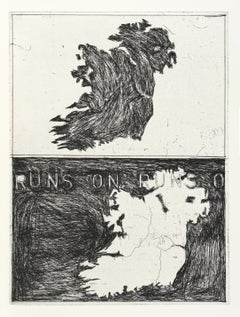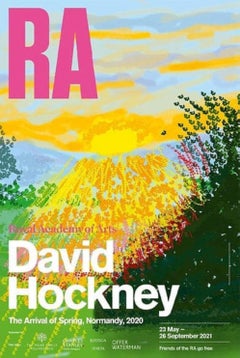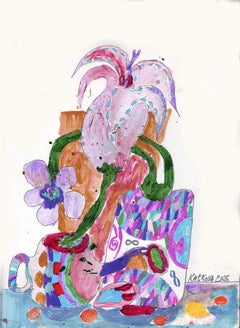Richard Diebenkorn More Art
Known for his gestural yet geometric depictions of American landscapes, Richard Diebenkorn blended Abstract Expressionism and figurative painting like no other artist before him.
Born in Portland, Oregon, but raised in San Francisco, California, Diebenkorn studied art history at Stanford University before enlisting in the Marines. Afterward, on the G.I. Bill, he enrolled at California School of Fine Arts (now San Francisco Art Institute) in 1946, where he became an instructor a year later. In 1950, he pursued a master’s degree at the University of New Mexico.
He lived and worked for a period during the postwar years in New York City, where he met Mark Rothko and immersed himself in Robert Motherwell’s art. However, the perspective that Diebenkorn brought to his paintings and prints was firmly rooted in the West Coast. His canvases, even when he worked in an abstract style, evoked California’s sandy coastlines and varied topography — one of the attributes that set him apart from contemporaries such as Willem de Kooning and Philip Guston.
Diebenkorn is acclaimed for his representational paintings; he was a founding member of the Bay Area Figurative movement, along with David Park and Elmer Bischoff. But he is best known for his lyrical abstract work. He explored abstraction during the 1950s before switching to figuration — creating still lifes and working with live models — and then returned to abstraction, developing a distinctive style that was entirely his own.
When Diebenkorn moved to Southern California, he began to teach at UCLA and commenced work on what would become his enduring “Ocean Park” series, named for the Santa Monica suburb he called home as of 1966 and inspired by the view from his studio — in particular, the light on the landscape outside the windows as framed by the windows themselves. The influence of Henri Matisse loomed large too. Diebenkorn had been an admirer of Matisse’s work since his days in the military, and in 1964, a trip to see the French painter’s work at the State Hermitage Museum in Leningrad proved monumental for him.
The “Ocean Park” series, created over the span of two decades, comprised more than 140 large paintings with gentle, shimmering compositions of color arranged in geometric harmony, with the texture of Diebenkorn’s constant reworking of the paint coming through.
“All paintings start out of a mood, out of a relationship with things or people, out of a complete visual impression,” Diebenkorn once said. Today, his work can be found in the collections of the Whitney Museum of American Art, the Phillips Collection, the Los Angeles County Museum of Art and more.
Find authentic Richard Diebenkorn art on 1stDibs.
1990s Richard Diebenkorn More Art
Paper
2010s Contemporary Richard Diebenkorn More Art
Paper, Lithograph, Offset
2010s Richard Diebenkorn More Art
Paper, Watercolor, Pencil
2010s Contemporary Richard Diebenkorn More Art
Paper, Lithograph, Offset
2010s Contemporary Richard Diebenkorn More Art
Paper, Lithograph, Offset
2010s Pop Art Richard Diebenkorn More Art
Paper, Tempera, Gel Pen
2010s Richard Diebenkorn More Art
Paper, Oil
2010s Richard Diebenkorn More Art
Paper, Oil
2010s Contemporary Richard Diebenkorn More Art
Paper, Lithograph, Offset
2010s Contemporary Richard Diebenkorn More Art
Paper, Lithograph, Offset
2010s Richard Diebenkorn More Art
Paper, Oil
2010s Richard Diebenkorn More Art
Paper, Watercolor, Pencil
1950s Contemporary Richard Diebenkorn More Art
Paper, Ink
1980s Richard Diebenkorn More Art
Paper, Etching, Aquatint



